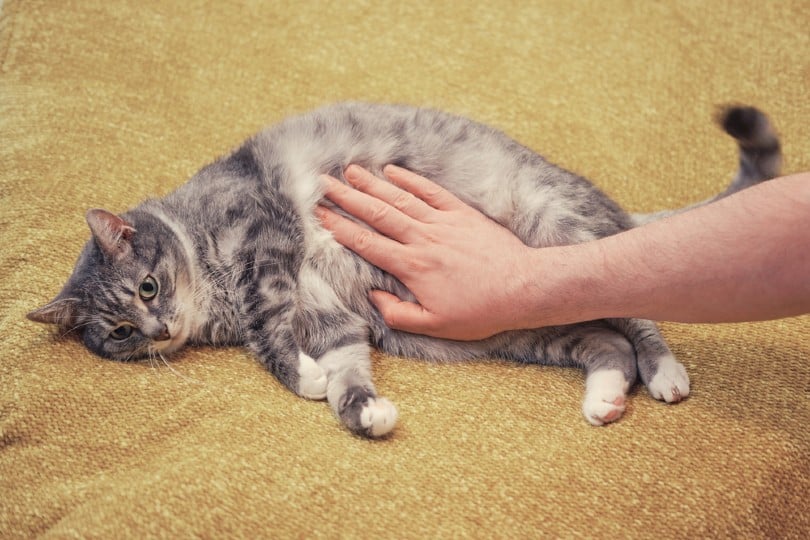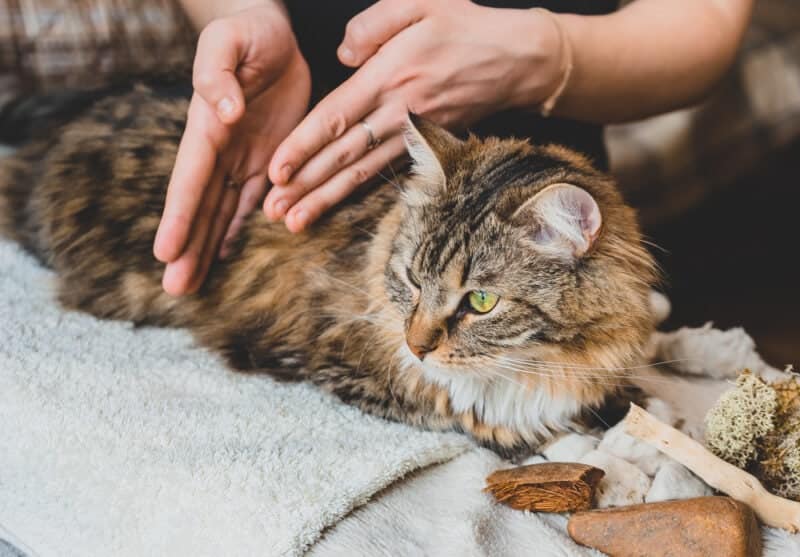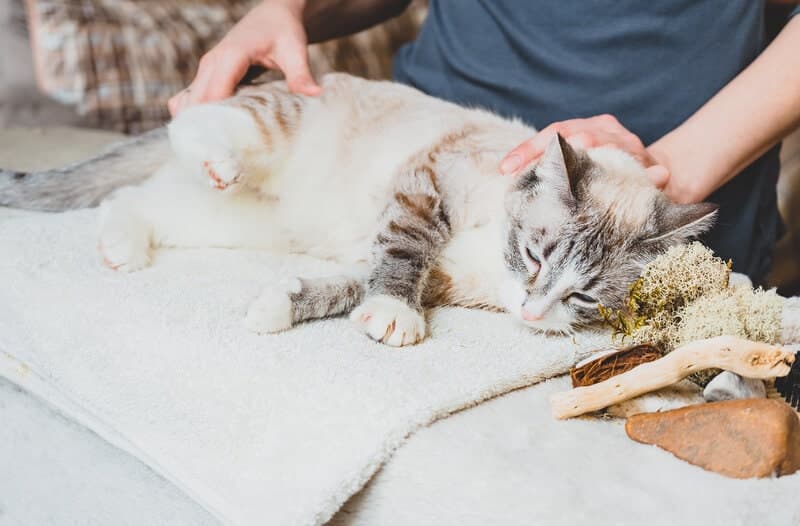Cats are known for being good at hiding their pain. After all, they evolved in an environment where showing pain put them at higher risk of being attacked by a predator or another feline.
Fortunately, vets are starting to understand this, and cats are now getting pain management when they wouldn’t have before. Massage is one way that pain can be managed, especially for kitties with arthritis and similar ailments.
Cat massage involves the manipulation of a feline’s soft tissues. Each technique is referred to as a “stroke,” and every stroke does something different, so you’ll want to use several different strokes on your feline. That said, you may want to focus more on some strokes than others.
The 4 Different Strokes
There are several different strokes that you’ll have to learn to massage your cat correctly. Here are a few of the most recommended strokes, what they do, and when to use them.
1. The Simple Stroke
The most common stroke is called the “simple stroke.” This involves petting from one end of the cat’s body to the other. Typically, you start at the head and go all the way down to the tail. You should also stroke all the way down each limb. Use light to medium pressure the entire time.
For the most part, you’ll use this stroke at the beginning and end of a session. By opening with a simple stroke that is similar to how most cats are used to being touched, you help relax your cat. It also makes a cat more receptive to the rest of the strokes.
Furthermore, it gives you the opportunity to notice any lumps or other problem areas.

2. Effleurage
This stroke involves a gliding motion using the whole hand and medium pressure. You will use this stroke alongside muscles. Therefore, you’ll want to outline each muscle as best you can. You’ll want to move toward the heart (or the head, if you’re working on the back). The main point of this stroke is to help generate some heat to help with circulation. It can be quite effective at reducing swelling, so it works well for cats with arthritis.
If this is as far as your cat will let you go, you’ve accomplished something! However, there is another type of deep stroke that you may want to utilize.
3. Petrissage
This type of technique involves applying more pressure, so some cats don’t like it. However, it can be extremely effective, so we recommend working up to it as much as possible.
This type of stroke involves kneading over the muscles. It helps the muscles relax, removing knots and reducing muscle spasms. You may actually move the muscles a bit during this stroke, as you’ll want to use deeper pressure.
A variation of this stroke is skin rolling. Basically, you work from the ends of the limbs to the torso and then from the tail to the head. You roll the skin over the muscles underneath. This helps release any areas where the skin is adhered to the deep tissue, improving circulation of both lymph and blood. Many cats really enjoy this sensation, so it may work better for cats that won’t tolerate the standard petrissage easily.

4. Concussive Stroke
There are many types of concussive strokes. One of the most common is chopping. Basically, this involves moving the edge of the hand rapidly into a large piece of muscle mass. Tapping is also used, which involves using the fingers and lighter pressure. Often, tapping works better for cats, as it isn’t quite as aggressive.
This can increase the circulation of blood and lymph. However, it isn’t necessary for cats with arthritis. Speak to your vet about whether this is a solid option for your feline.
When to Massage Your Cat
On top of knowing which strokes to use, you’ll need to know when this massaging should occur. Preferably, you should pick a time when your cat is relaxed, as they need to lie still for the whole massage. Typically, you can’t massage your cat too much, but that doesn’t mean that you should massage them constantly.
Learn to recognize the signs of pain in cats. They can be very subtle, but by learning these signals, you can learn when your cat may need a massage. Following your cat’s lead in this way is much better than doing massages at prescribed times only.

When You Shouldn’t Massage Your Cat
Massage is typically extremely safe. However, there are many situations where it may not be the right tool for your feline. For instance, you should not massage your cat if they have an injury. Open wounds and fractures can be upset by massaging. You may also want to avoid massaging cats that have uncontrolled pain. Massaging does not always lessen the pain.
We also recommend avoiding massages if your cat has blood-clotting problems unless otherwise verified by your vet. Similarly, massages should not be done over tumors or infections. While there is no evidence that massaging spreads these issues around, there is always a chance.
Performing Massages at Home
The most effective massages are those that are performed by trained individuals. That said, you can learn to give massages at home. There is a bit of a learning curve, so be prepared to not be great at it at first.
Learning massaging techniques allows you to help deal with your cat’s pain when it appears. Plus, you can pick times that work best for your feline in places where your cat feels most relaxed. You can turn a typical cuddle session into a massage!
Often, vets can teach some of these techniques or provide resources that can.
A Word of Caution
When massaging your cat at home, please make sure you do not include any essential oils or other paraphernalia that are typically associated with human massages. Many essential oils, even when applied topically, are highly toxic to cats. Ask your veterinarian for recommendations before applying or giving any product or remedy to your cat.

Final Thoughts
Massaging your cat is not difficult, as there are only a few main strokes to know. After that, it’s simply getting the timing right and practicing. Of course, before you begin, you should always speak to your vet. Sometimes, massages can make a cat’s condition worse, so your vet must okay the practice before you move forward.
However, for cats that are candidates, massaging can be an easy way to help them deal with arthritis pain. Plus, it can be used alongside most medications and other treatments.
Featured Image Credit: Ekaterina Kuzovkova, Shutterstock











